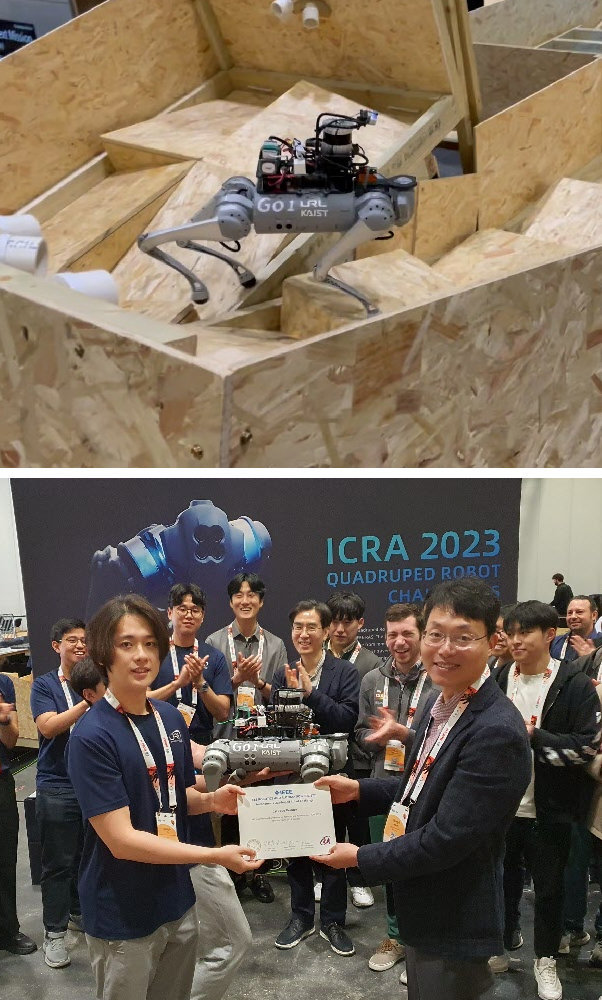KAIST's autonomous walking robot wins at international competition
KAIST's autonomous walking robot wins at international competition
Posted June. 07, 2023 08:23,
Updated June. 07, 2023 08:23

An autonomous walking robot developed by KAIST won first place in the international autonomous quadruped robot competition in which the Massachusetts Institute of Technology (MIT) and others participated.
KAIST announced on Tuesday that a research team led by Professor Hyun Myung of the Department of Electrical and Electronic Engineering won the autonomous quadruped robot competition at the "IEEE International Conference on Robotics and Automation," the largest academic conference in the field of robotics held in London, England on Thursday (local time).
KAIST received 246 points in the contest, in which 11 teams, including Korea, the US, Hong Kong, Italy, and France, took part, beating second-place MIT (60 points) by an overwhelming score. While most participating teams had robots directly controlled by humans, KAIST chose the autonomous navigation method. According to the rules of the competition, if the robot is driven by the autonomous walking method, it can receive a score four times higher than the remote operation operated by a human.
The competition was held in a 10-meter x 20-meter stadium. It was a course with various obstacles, such as slippery square panels with a 15-degree slope, obstacles that simulated sand, mud, and puddles, and rotating pipes and square stairs. The KAIST team finished the race in 41 minutes and 52 seconds. Despite the autonomous walking method, it was faster than the average completion time of 49 minutes for teams focused on remote manual operation.
"Unlike walking autonomous robots that can respond immediately to obstacles, remotely operated robots by humans are difficult to respond to when difficulties arise due to problems such as communication delays," the research team explained. As autonomous walking robots have achieved excellent results, successful mission performance can be expected when robots are sent to extreme and disastrous situations where communication is restricted.
In addition to KAIST, a team from the Italian Institute of Technology (IIT) used autonomous walking technology. The KAIST team garnered better performance than the Italian research team because it applied deep reinforcement learning, one of the artificial intelligence (AI) learning methods, in addition to autonomous walking technology.
Compared to other robots, the KAIST robot has an excellent 'recovery' ability to get up immediately after falling, just like roly-poly toys. Existing robots had difficulty coping with situations flexibly as pre-determined processes were applied, such as “If you fall, extend your left leg and rotate your body.” The KAIST research team dropped the robot from the air, implemented various fall situations, and rewarded the robot (if the robot stood up again) for learning. “This is the first learning case in which a reward or penalty is given depending on whether the robot recovers after being dropped,” Professor Myung said.
forward@donga.com







